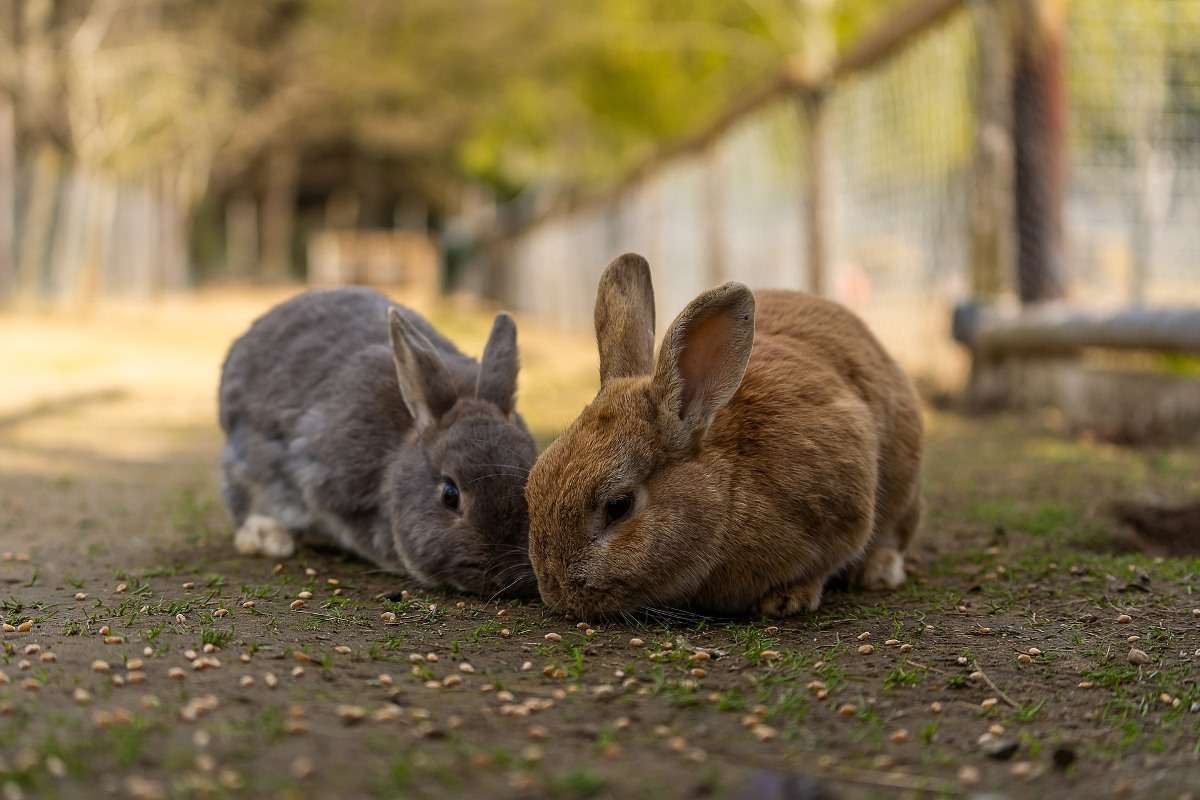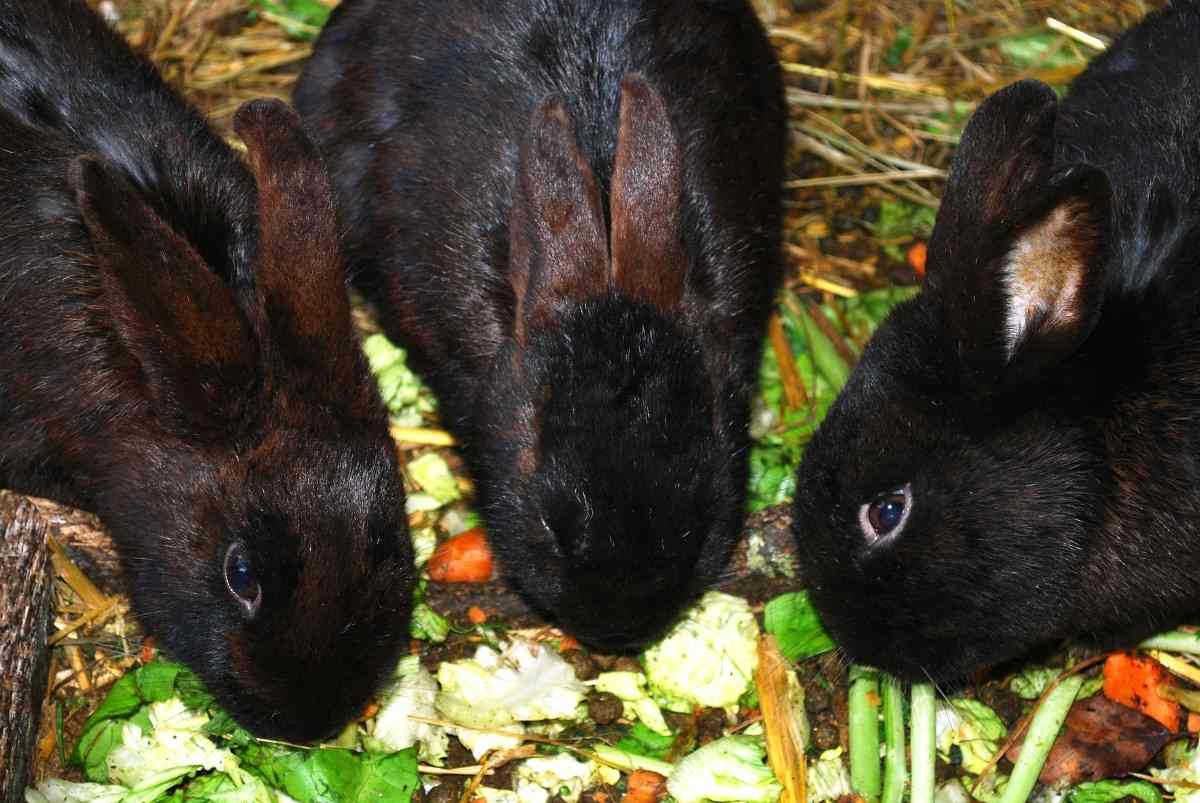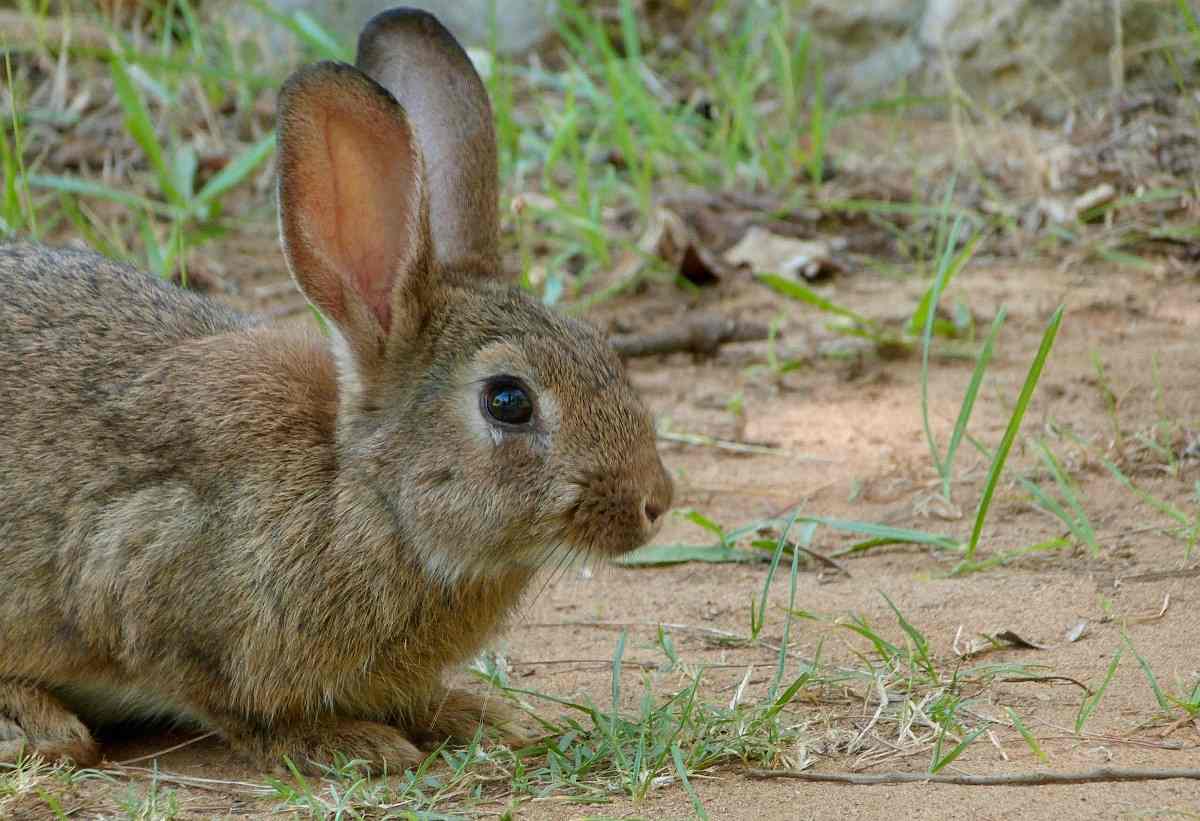Introduction to Rabbit feed chart and weight chart
The Rabbit farming business has great importance as all like other livestock which can be started with low investment, and less space. This is a good source of income for many unemployed peoples. Rabbits produce a high-quality woolen can be mixed up with other fine fibers for preparing quality woolen cloths, and which are in trending demand. Male rabbits are known as “bucks” and female rabbits are known as “does”. In this article we also discuss below topics;
- How many times a day should feed the rabbit
- What should I feed my rabbit daily
- Weight Gain Diet for Underweight Rabbits
- What kinds of vegetables should feed my rabbit
A step by step guide to Rabbit feed chart and weight chart
Rabbit farming business is not only profitable but enjoyable too. One can grow a rabbit as a pet and grow in small land without much investment. There are several advantages of commercial rabbit farming in India. Bunnies are cute and small-sized animal. They are soft and a good source of meat. There is a high demand for rabbit meat in the market and there are not enough suppliers to fulfil this growing demand. It is a business with low investments and high profits.

Rabbit feeding
A rabbit must be fed twice daily, in the morning and evening, and their daily diet should consist of unlimited access to hay or grass. Also have a handful of fruit, vegetables or leafy plants. And small amounts of good quality commercial rabbit mix or pellets up to 25g per kg of the rabbit’s body weight.
The feed is an important aspect of raising rabbits because it accounts for about 75% of production costs. The following feedstuffs are commonly used in rations for rabbits;
Green feeds – growing plants such as grasses, weeds and leafy vegetables
Root crops – sweet potatoes, turnips, and beets
Cereal grains – oats, wheat, barley, grain sorghums, corn, and rye
Milled feed – bran, middlings, and shorts
Hays – alfalfa, lespedeza, and timothy
Protein supplements – soybean meal, peanut meal, and dried products
Salt – When formulating a rabbit ration, make sure it will supply the rabbits with adequate amounts of the required nutrients.
The amount of feed required by a rabbit will depend on several factors. Things to be considered are;
- The composition of the ration.
- The environment’s temperature
- The breed of rabbit.
- The size and age of the rabbit.
- The stage of the rabbit’s life cycle.
- Rabbits generally eat more feed at night than during the day.
Baby Rabbit diet
Like all mammals rabbit’s initial diet is their mother’s milk, which they’ll continue to drink until 6 to 8 weeks old. They first start nibbling on solids (usual hay from around the nest) between 2-3 weeks and by 3-4 they’ll be eating the same foods as their mum (plus milk).
As rabbits are weaning between 6 to 8 weeks their digestive system is adjusting from milk to adult solids, which is a particularly sensitive time and why rabbits must stay with their mother for a minimum of about 8 weeks. If your rabbit is younger than 8 weeks and one, never get a rabbit from that source again they shouldn’t be selling them, and two, you’ll need to be particularly careful about bunny’s diet and try to avoid any changes.
Methods of Rabbit farming
Rabbits can be raised in any of the two systems, cage system or deep litter system. Proper housing for Rabbits is necessary to protect the rabbits from inclement weather conditions of heat, rain and cold as well as from predator animals like cats and dogs. Sheds can be made in the backyard with very less investment.
Feeding of farm Rabbits
Nutritious food should be fed to the farm rabbits for proper growth and good health. Grains, legumes and green fodders like Lucerne, Agathi, Desmanthus and kitchen wastes like carrot and cabbage leaves can be fed. Some amount of concentrate feed should be fed. For 1 Kg bodyweight of rabbit, 40 grams of concentrate food and 40 grams of green fodder is required along with ad libitum supply of fresh and clean drinking water.
The feed conversion efficiency of Rabbits
The basic principle of broiler rabbit industry is to exploit the feed efficiency of rabbits. Then, it is practically impossible to record daily the feed given to every rabbit. Then, the number of days taken to attain 2 kg body weight is taken as a yardstick for feed conversion efficiency. Animals attain 2 kg body weight at lower age are assumed to be better converters of feed and are selected as breeding animal.
The ideal diet for young Rabbits
The diet of young rabbits and adults is similar. Hay is the most important component and this is supplemented with dry food (pellets) and fresh foods. There are some extra considerations for young rabbits.
Hay and water are essential foods. Baby rabbits need more protein, so give those pellets and alfalfa hay. Your rabbit should be weaned. If not, use kitten or goat milk to imitate their mother’s milk.
Hay as part of Rabbit feed chart
Like adults, hay plays an important role in a young rabbit’s diet. Grass hay-like meadow or timothy is the one food you should introduce from the start, even if the rabbit isn’t already eating it. This is the gentlest food on the gut and will provide the fibre required for the digestive process to function.
Young rabbits can have alfalfa, which looks a bit like chopped up hay but is made from lucerne rather than grass. It is higher in protein and calcium than grass hay, which is ideal for growing rabbits but too rich for adults. If you are feeding alfalfa it’s a good idea to feed it mixed with grass hay. This stops your rabbits getting so hooked on alfalfa that it’s difficult to make the transition to grass hay when they reach adulthood. You should phase out alfalfa at around 4-5 months old.
There are several different types of hay available, each with slightly different qualities.
Grass Hay (aka Meadow Hay or Timothy Hay) – This is the most popular hay feed among rabbit owners. This hay is fresh grass that has been cut and dried out. Then, this means that it replicates a wild rabbit’s diet.
Oat Hay – This hay is made up of oat grass, which is harvested before blooming. Once the oat blooms, this hay no longer contains any nutritional value for a rabbit. It can be used as bedding, though.
Alfalfa Hay – This is a little different; it’s a legume, rather than grass. Alfalfa hay is usually fed to larger animals. It contains more protein and calcium than other hays, so it leads to weight gain.
Pellets as part of Rabbit feed chart
Pellets are important in the younger stages of rabbit development as they are highly concentrated in nutrients, and helping to ensure proper weight gain. A quality pelleted food must be high in fibre (18% minimum) and nutritionally balanced. As a rabbit reaches maturity, however, pellets should make up less of the diet replaced with higher quantities of vegetables and hay. Overfeeding pellets in mature rabbits could lead to obesity and other medical conditions.
Clean and fresh water requirement
Freshwater must be available to your pet around the clock, as well. Each day, change the water in the water bottle with fresh water. Every week, sanitize the water dish or bottle with mild dish detergent and rinse thoroughly before adding drinking water.
Vegetables as part of Rabbit feed chart
In case if you are interested in this: Raising Goats In The Backyard.

Vegetables provide valuable roughage, as well as necessary vitamins. As early as 3 months of age, and you can begin to offer vegetables. Introduce new vegetables one at a time. This way, if a digestive upset occurs, you will know which food can be the culprit. Eliminate those that cause soft stools or diarrhea. Continue to add new varieties, including dark leafy vegetables and root vegetables, and serve vegetables of different colours. Once your rabbit is used to several vegetables, feed at least 3 different kinds daily for a mix of nutrients.
Sample feed formula chart for Rabbit feed
| Ingredient | Quantity (kg) |
| Bran of Maize, Rice or Wheat | 20 |
| Wheat, Rye, Sorghum or Millet Middling | 20 |
| Groundnut cake | 15 |
| Dried Grass or Alfalfa Meal | 37 |
| Molasses | 5 |
| Premix | 2.5 |
| Common salt | 0.5 |
| Total | 100 |
High quality and nutritious feed chart or food for Rabbits
Generally, rabbits can eat and consume all types of grains, legumes and green fodders such as Lucerne, agathi, Desmanthus and various types of kitchen wastes including carrots, cabbage leaves, and other vegetable wastes. In case of raising rabbits by feeding concentrate food, try to give them some green food. For 1 kg body weight of rabbit, you can feed them 40 grams of concentrate food and 40 grams of green food. Along with good and nutritious food, try to provide them with a sufficient amount of fresh and clean water according to their demand.
Rabbits suitable for breeding within their 5 to 6 months of age. One should use male rabbits for breeding purposes at their 1 year of age to get quality young rabbits. And, always use healthy rabbits for breeding with proper age and body weight. For better production, one must take good care of animals. Generally, diseases are less in rabbits.
Feeding Rabbits through their stages of development
Rabbits need to be fed differently at different stages of their growth to ensure rabbit healthy development, digestion, and weight. Throughout a rabbit’s life, avoid any sudden changes in diet; new foods always be introduced gradually. Remember to keep fresh clean water obtainable at all times, too. Water bottles versus dishes are recommended.
Baby Rabbits – A baby rabbit, or kit, feeds solely on its mother’s milk for about the first 3 weeks. During the first few days, the milk has high levels of antibodies that help protect the kit from the disease. After 3 weeks, the kit will begin nibbling on alfalfa hay and pellets. By 7 weeks of age, baby rabbits can handle unlimited access to pellets and alfalfa hay in addition to rabbit mother’s milk. Kits are weaned from their mother’s milk by 8 weeks of age, depending on the breed.
Juvenile Rabbits– Between weaning and 7 months of age, the young rabbit can have an unlimited amount of alfalfa hay and pellets. At 3 months of age, start introducing small amounts of vegetables into a rabbit’s diet. Introduce one vegetable at a time. If any vegetable seems to cause rabbit digestive problems, avoid feeding it in the future.
Young adult Rabbits – Young adult rabbits from age 7 months to 1 year should be introduced to timothy, grass hays, and oat hay and it must be available all day long. The fibre in the hay is necessary for their digestive systems to work properly. At this point, they will need little alfalfa hay, as well as fewer pellets. Alfalfa hay has more calories and calcium than rabbits need at this stage of development, and the high-calorie content of pellets can begin to cause some weight problems. Instead of offering unlimited pellets, a good rule of thumb is 1/2 cup of pellets per 6 lbs. of body weight daily. To make up for the nutritional loss, you must increase the rabbit’s intake of vegetables and hay. You can feed rabbits some fruits during this stage, but because of calories, limit them to no more than 1 to 2 ounces per 6 pounds of body weight daily.
Mature adult Rabbits – Mature adult rabbits must be fed unlimited timothy, grass hay, and oat hay. Once again, you should reduce the pellet portion of the diet. A standard guideline is about 1/4 cup of pellets per 6 lbs. of body weight per day and several servings of vegetables are required (2 cups per 6 pounds of body weight daily). Make sure to select dark, leafy greens, and feed at least three different kinds daily. Iceberg or other light-colored varieties are not nutritious. Also, make sure you are offering orange and dark yellow vegetables. Treats, including fruits, must be fed sparingly.
Senior Rabbits – Senior rabbits over 6 years of age can be fed the same diet as mature rabbit adults if they do not have weight loss problems. You may need to increase pellet intake if your pet is not able to maintain his or her weight. Alfalfa can also be given to underweight rabbits, but only if calcium levels are normal. Annual blood workups are highly recommended for senior rabbits to determine the level of calcium and other components of the blood.
Model feeding schedule for the different categories of Rabbits
| Different stages of Rabbits | Quantity to be fed per day | ||
| Approximate body weight | Concentrates | Green grass | |
| Bucks (Adult male) | 4-5 kg | 150 g | 600 g |
| Does (Adult female) | 4-5 kg | 150 g | 600 g |
| Lactating does | – | 200 g | 700 g |
| Weaner (6 weeks) | 600-700 g | 50 g | 200 g |
Foods to avoid as part of Rabbit feed chart

A diet of grass hay and leafy greens with small amounts of fruits and vegetables contains all the nutrition necessary for a pet rabbit. Unfortunately, there are many commercial treat foods sold for rabbits that have high levels of starch and fat. Also, some people still feel that it is necessary to feed rabbits high starch foods like cereals, cakes and cookies. Although a pet rabbit can eat small amounts of starchy or fatty foods without ill effect, the problem is that people often feed excess amounts because the rabbits eat these foods so greedily. Our recommendation is to completely avoid high starch and fat foods for your pet. In this way, you will avoid any potential problems these foods can cause, including obesity and serious gastrointestinal disease. It is always easier to prevent than to treat a disease.
Examples of high fat and starch foods for rabbits to avoid include;
- Grains
- Beans (of any kind)
- Cereals
- Chocolate
- Corn
- Nuts
- Oats
- Peas
- Refined sugar
- Seeds
- Wheat
In case if you are interested in this: Growing Organic Onions At Home.
I have learn a lot about rabbits I know you the best